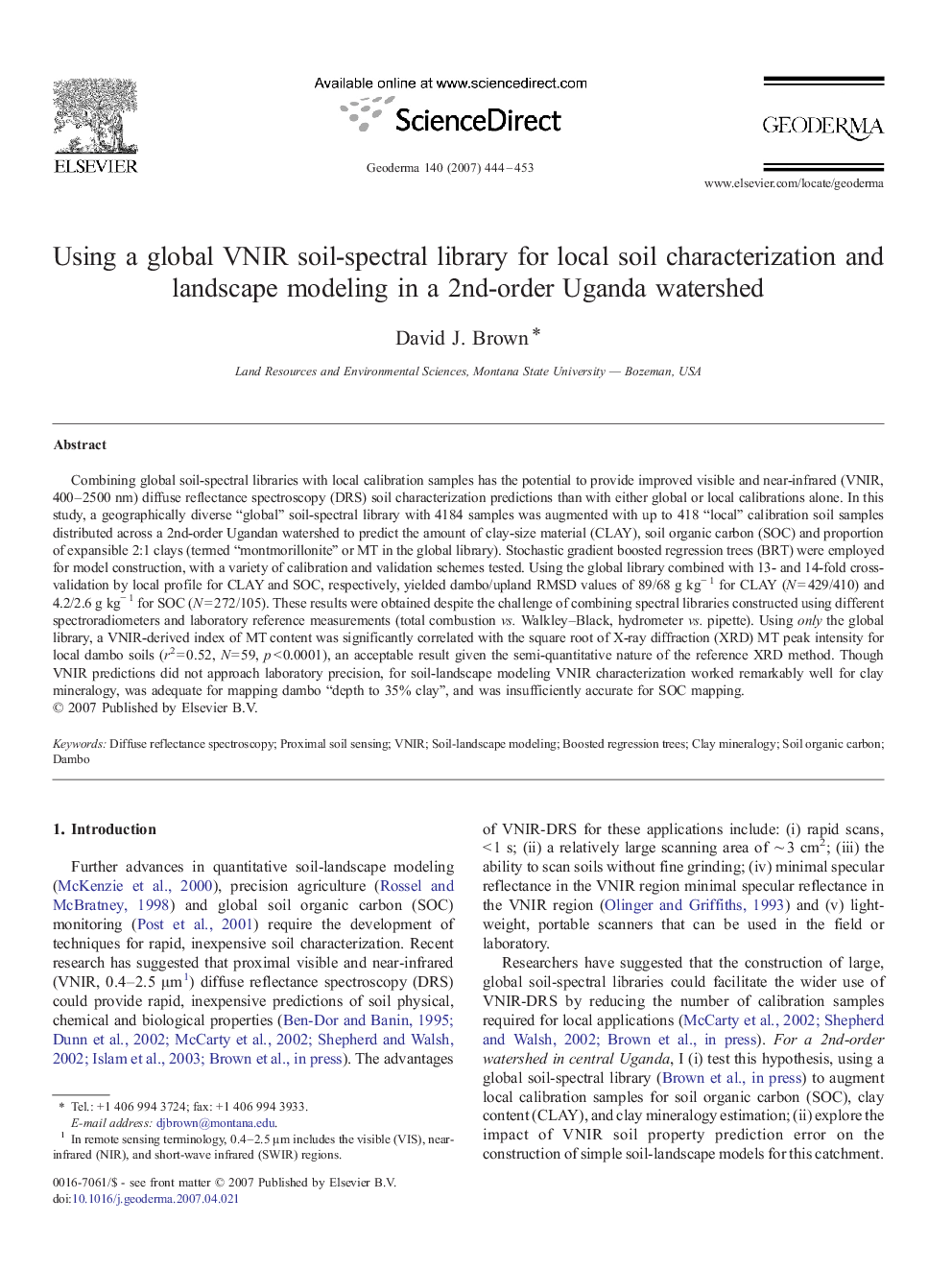| کد مقاله | کد نشریه | سال انتشار | مقاله انگلیسی | نسخه تمام متن |
|---|---|---|---|---|
| 4575110 | 1629552 | 2007 | 10 صفحه PDF | دانلود رایگان |

Combining global soil-spectral libraries with local calibration samples has the potential to provide improved visible and near-infrared (VNIR, 400–2500 nm) diffuse reflectance spectroscopy (DRS) soil characterization predictions than with either global or local calibrations alone. In this study, a geographically diverse “global” soil-spectral library with 4184 samples was augmented with up to 418 “local” calibration soil samples distributed across a 2nd-order Ugandan watershed to predict the amount of clay-size material (CLAY), soil organic carbon (SOC) and proportion of expansible 2:1 clays (termed “montmorillonite” or MT in the global library). Stochastic gradient boosted regression trees (BRT) were employed for model construction, with a variety of calibration and validation schemes tested. Using the global library combined with 13- and 14-fold cross-validation by local profile for CLAY and SOC, respectively, yielded dambo/upland RMSD values of 89/68 g kg− 1 for CLAY (N = 429/410) and 4.2/2.6 g kg− 1 for SOC (N = 272/105). These results were obtained despite the challenge of combining spectral libraries constructed using different spectroradiometers and laboratory reference measurements (total combustion vs. Walkley–Black, hydrometer vs. pipette). Using only the global library, a VNIR-derived index of MT content was significantly correlated with the square root of X-ray diffraction (XRD) MT peak intensity for local dambo soils (r2 = 0.52, N = 59, p < 0.0001), an acceptable result given the semi-quantitative nature of the reference XRD method. Though VNIR predictions did not approach laboratory precision, for soil-landscape modeling VNIR characterization worked remarkably well for clay mineralogy, was adequate for mapping dambo “depth to 35% clay”, and was insufficiently accurate for SOC mapping.
Journal: Geoderma - Volume 140, Issue 4, 15 August 2007, Pages 444–453